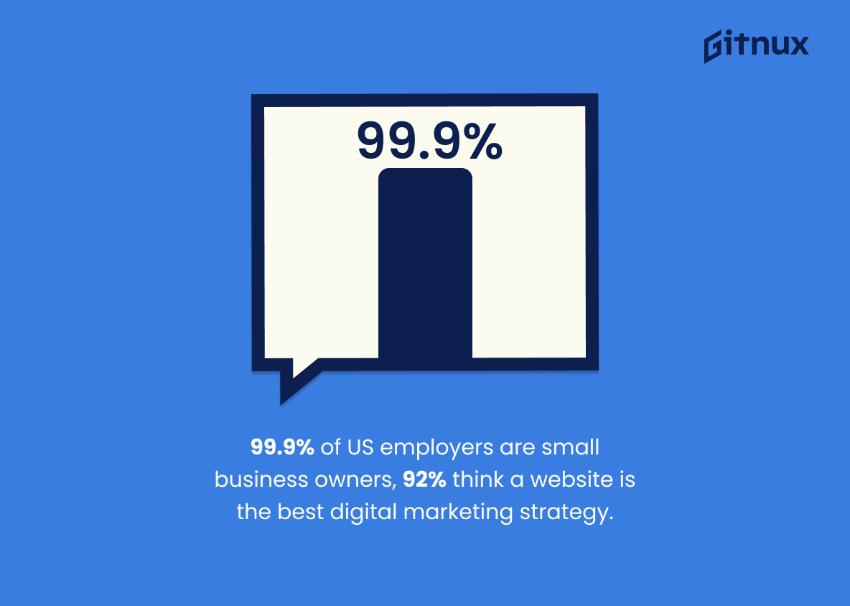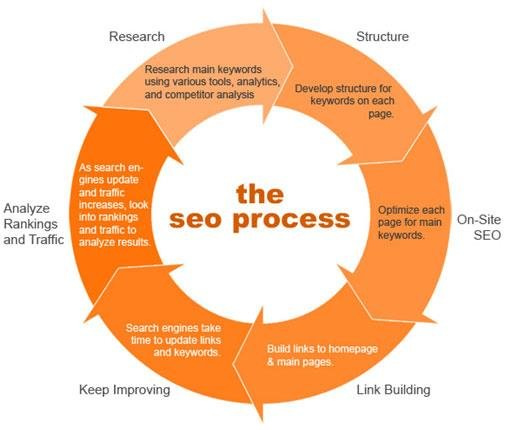Show:
Navigating the Digital Landscape: A Holistic Approach to Web Success
Achieving success in the online world is getting increasingly complex. Statistics reveal that over 86% of consumers expect a seamless experience across all digital platforms, highlighting the need for a holistic approach that encompasses various facets of online marketing and presence.
Rather than focusing on isolated tactics, a comprehensive strategy integrates digital marketing, content creation, SEO, social media, web design, and email marketing to build a strong, cohesive online identity.

Whether you’re running a small business or working in digital marketing, this guide offers a comprehensive digital strategy to help you manage the intricacies of the online world.
Understand Your Digital Terrain
Embarking on a journey through the digital landscape begins with a solid foundation. Assessing your current digital presence and pinpointing gaps is akin to understanding the terrain you’re navigating. What is your target audience? Who are your competitors? How is your product different from the current ones in the market? Start with getting answers to these questions.
Analyzing your competitors can offer valuable lessons. Look at their digital strategies: What are they doing well? Where do they fall short? Use this information to differentiate your offerings. Highlight what makes your product or service unique in your marketing messages.
Lastly, clearly defining your business goals and aligning them with measurable digital objectives is crucial. Whether it’s increasing website traffic, boosting online sales, or growing your email list, setting specific, achievable targets will guide your digital strategy and help you monitor progress.
Work on Your Website’s Design and User Experience

Having a modern website goes without saying in the modern digital world. The design of your website and the user experience (UX) it delivers are fundamental in guiding visitors through your digital landscape. Implementing responsive design ensures your site is accessible and appealing across a range of devices, from desktops to smartphones.
Optimizing navigation and the overall user journey on your website is akin to laying out clear, accessible pathways through a garden. Each path should lead visitors naturally from one point to another, encouraging exploration while making it easy to find what they’re looking for.
Prioritizing loading speed and mobile usability further enhances the user experience, making your digital presence not just accessible but also enjoyable to interact with. In this way, design and UX are not just about aesthetics but about creating a smooth, engaging journey for every visitor, encouraging them to stay, explore, and return.
Create Compelling Content
In the heart of your online presence lies content creation—a crucial element that breathes life into your online presence. However, it demands a deep understanding of your audience’s interests, pain points, and questions.
This understanding informs the creation of high-quality, relevant content that not only answers their questions but also engages and inspires them. Also, diverse content is key! You need to keep your audience engaged by mixing up the content.
Consider these formats:
- Blog Posts: Deep dives into topics your audience cares about. For example, if you’re in the health industry, a post on “10 Ways to Improve Sleep Quality Naturally” could be very engaging.
- Infographics: Condense complex information into easy-to-understand visuals. They’re perfect for summarizing research findings or statistics, like “The State of Remote Work in 2024.”
- Videos: Create how-to guides, product reviews, or behind-the-scenes looks into your company. Add relevant hashtags, and share them on your YouTube channel to get maximum exposure.
- Podcasts: Discuss industry trends or interview experts. This is great for audiences who prefer audio content, like commuters.
- Interactive Content: Quizzes, polls, or surveys that engage your audience actively. These can be fun or informative and are excellent for increasing engagement and collecting data on your audience’s preferences and needs.
- User-Generated Content: Encourage your audience to share their own content related to your brand or industry. This can include testimonials, photos, or stories of their experience with your product or service. It’s excellent for building community and trust.
Level Up Your Email Marketing

Email marketing is a super direct way to chat with your crowd, but loads of folks don’t fully tap into its magic. To kick your email marketing up a notch, think about slicing your email list into bite-sized, more focused groups. This could be based on what they’ve bought, where they’re chilling, or how they interact with your stuff.
Use a tool like Mailchimp for segmentation. It lets you easily create different groups within your list, so you can send tailored messages to each.
For automation, try out HubSpot. It’s great for setting up automatic emails that go out when someone signs up for your list or makes a purchase. This keeps your audience engaged without you having to manually send out every email.
Use Social Media

Dive into the world of social media to connect with your audience and boost your brand’s presence. But remember, it’s not just about posting often. You need a plan that fits with your bigger digital marketing picture. Here’s how to make social media work for you:
- Start Conversations: Talk to your followers. Reply to their comments. Share content that matters to them. This turns your pages into thriving communities where your brand’s voice gets heard loud and clear.
- Use Analytics: Keep an eye on which posts get the most likes, shares, and comments. Social media tools can show you this info, helping you understand what your audience loves. Use these insights to make your future posts even better.
- Go Beyond Organic: With social media ads, you can reach specific groups of people who are most likely to be interested in what you offer. It’s a smart way to get more eyes on your brand and pull more visitors to your site.
Think of social media as your space for engaging, learning, and growing your community. It’s your stage – make the most of it!
Optimize for Search Engines

Optimizing for search engines is akin to setting up signposts that guide visitors directly to your digital doorstep. Here’s how you can make your content more visible and appealing to search engines:
- Focus on Keywords: Identify the phrases your audience uses when searching for your products or services. Use tools like Google Keyword Planner or Ubersuggest to find relevant keywords. Include these keywords naturally in your titles, headings, and throughout your content.
- Craft Compelling Meta Descriptions: Write clear, concise meta descriptions that include your primary keywords. These are the snippets that appear under your page title in search results, acting as a teaser that invites clicks.
- Use Alt Text for Images: Describe your images using alt text, incorporating keywords when appropriate. This not only aids in SEO but also improves accessibility.
- Monitor Your SEO Performance: Use tools like Google Analytics and Google Search Console to track your website’s performance. Look at metrics like organic traffic, bounce rate, and track your keyword rankings to understand what’s working and what needs improvement.
- Improve Site Speed: Use tools like Google PageSpeed Insights to test your site speed and follow their recommendations to improve it. Faster sites rank better and provide a better user experience.
- Improve User Experience (UX): A site that’s easy to navigate and enjoyable to use is more likely to keep visitors around, reducing bounce rates and improving rankings. Conduct user experience tests to identify and fix any issues.
- Build Quality Backlinks: Encourage reputable sites to link back to your content. This can be achieved through guest blogging, collaborations, or creating shareable content.
Security and Compliance
In today’s online world, keeping your website safe and following the rules is crucial. It’s all about earning your visitors’ trust and showing them you’re serious about protecting their information. Start with the basics: make sure your site has an SSL certificate, update your software regularly, and use strong passwords. These steps are your first defense against hackers and breaches.
But it’s not just about keeping out the bad guys. Places like Europe with GDPR and California with CCPA have strict rules about handling personal information. You need to know these rules well and follow them to avoid fines and keep your customers feeling secure.
Here’s a practical tip: use a tool that tracks your web pages, taking snapshots regularly. If you ever need to prove you were following the rules, these snapshots can be a lifesaver. Think of it as setting up a security camera for your digital space—it’s about being proactive in protecting and complying with the law.
Personalized Paths to Your Web Success
Your online business success hinges on a strategic blend of compelling content, seamless design, and robust engagement. Begin by pinpointing one aspect of your digital presence that needs immediate attention. Perhaps it’s sprucing up your website’s loading speed, elevating your content’s relevance, or intensifying your social media engagement.
Focus on this area first. If content is your chosen starting point, craft a calendar that mirrors your audience’s curiosity and needs. Dive into social media with genuine interest, engaging in meaningful conversations and valuing feedback.
Embrace gradual changes, focusing on areas with the most significant impact. Keep abreast of digital trends and adapt your approach as necessary, ensuring your online space remains secure, inviting, and compliant with regulations. This mindful, step-by-step journey will steer you towards a flourishing digital future.

 Return to Previous Page
Return to Previous Page








